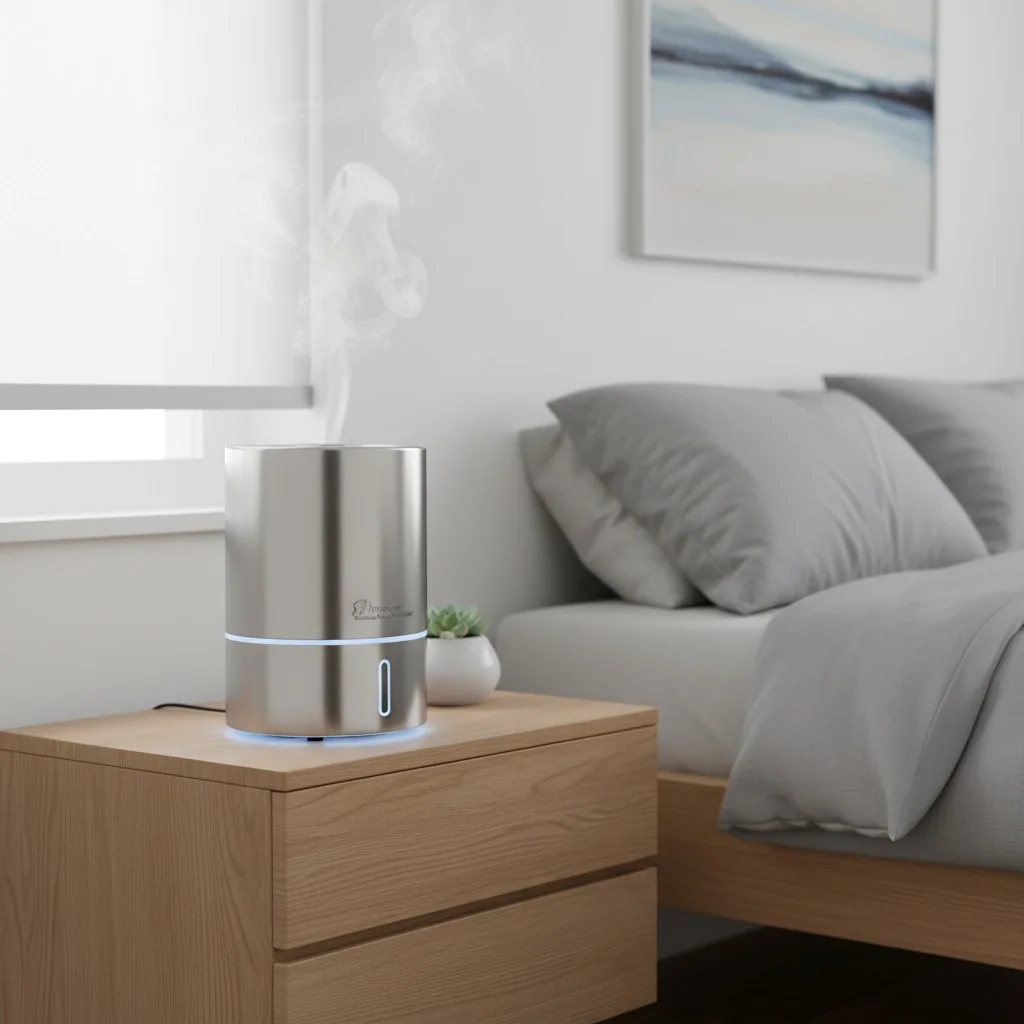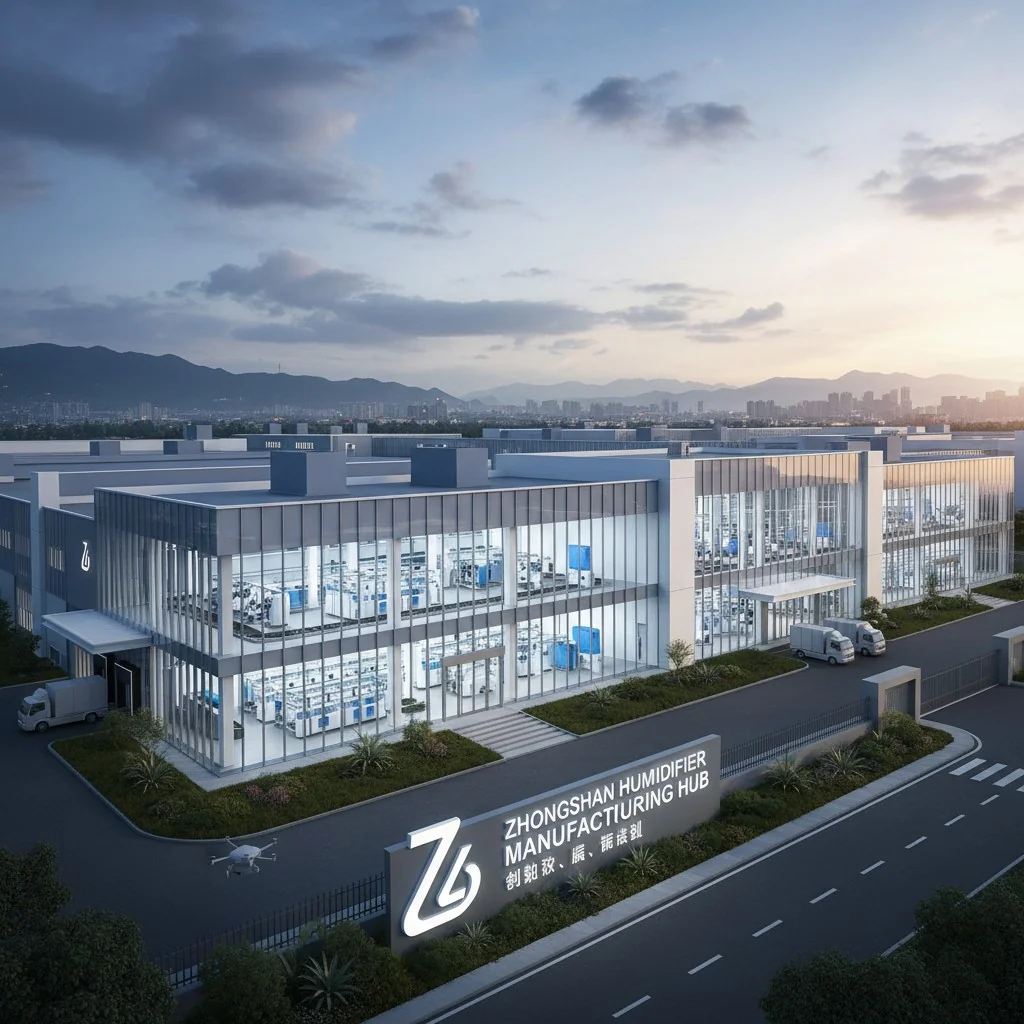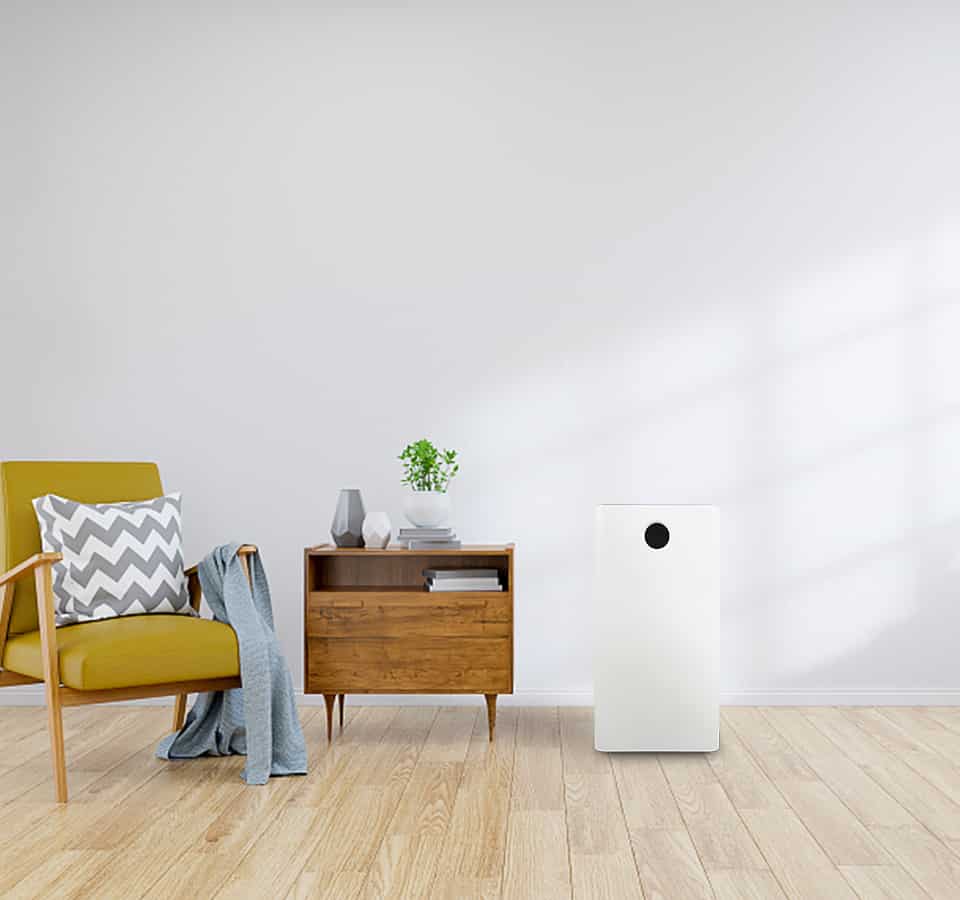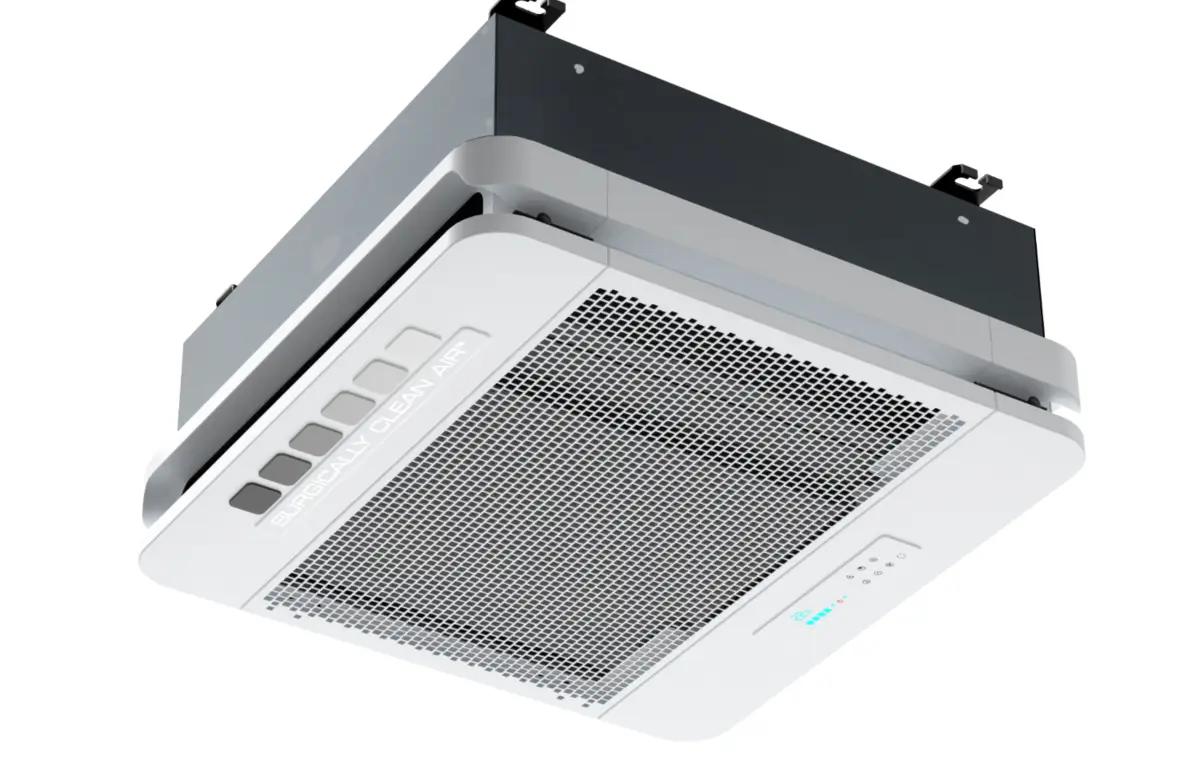
病院に最適な空気清浄機は、医療グレードのものを使用している。 ヘパ 14個のフィルター。これらのフィルターはバクテリアとウイルスを効果的に除去します。清浄機は高い清浄空気供給率(CADR)を使用して広い範囲を洗浄することができる。米国FDAの認可が必要です。静かな動作は、患者にとって安らかな空間を保つために重要である。落ち着いた環境は癒しにとって重要です。
病室に入ったときのことを覚えている。空気が重く感じられ、強い臨床臭がした。そのとき、このような場所での空気の質の重要性がはっきりとわかった。空気清浄機を選ぶには、医療用フィルターを選んだり、空気清浄機の性能をチェックしたりするだけではない。 CADR 格付け目標は、患者がよく治る環境を作ることである。忙しい病棟では、壁掛け型が最も効果的でしょう。騒音レベルも重要です。機械が大音量でうなる中、休息をとったり、医師と話したりすることを想像してみてください。FDA(米国食品医薬品局)のクリアランスのような認証は、ユニットが厳格な衛生規則に適合していることを示すものである。このような決断を下す際には、単に機能だけでなく、これらの機械が影響を与える人々について思い出してほしい。命に関わることなのだ。
HEPA14フィルターは病院の空気清浄機には欠かせない。真
HEPA 14フィルターは、病院にとって重要なバクテリアやウイルスを効果的に除去します。
すべての病院用空気清浄機は、FDAの認可を受けていなければならない。偽
FDAの認可が必要なのはアメリカだけで、すべての病院に共通ではない。
なぜ病院用空気清浄機には医療用フィルターが不可欠なのか?
病院に入って、山のそよ風のようにさわやかな空気を吸い込む自分を想像してみてください。それが医療用フィルターの素晴らしさです。
のような医療用フィルターがある。 ヘパ 14は、病院の空気清浄機で重要な役割を果たしている。有害なバクテリア、ウイルス、その他の汚染物質を空気中から除去するのだ。このプロセスにより、より安全な環境が作り出される。患者と医療スタッフは、この安全性から恩恵を受ける。これは非常に重要なことです。
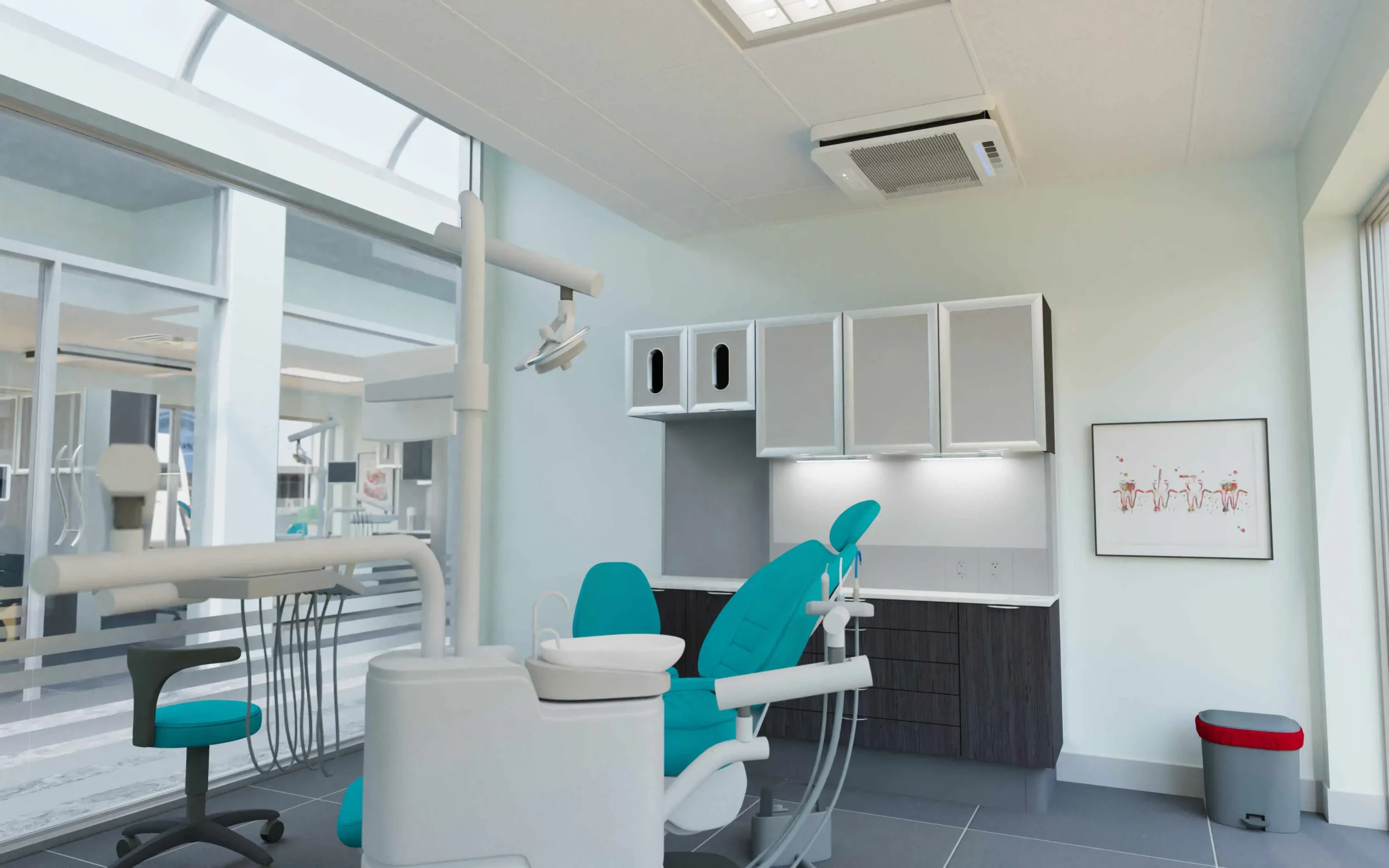
医療用フィルターの役割
私が初めて、病院における空気の質がいかに重要であるかを理解したときのことを覚えている。ICUにいる友人を見舞ったときのことだ。空気がいつもと違ってきれいで、心地よく感じられたのだ。その時、ICUのような医療用フィルターを知ったのです。 ヘパ 14.これらは通常のガジェットではなく、0.3ミクロンという小さな粒子を少なくとも99.995%捕獲する。これは ろ過レベル1 病院では、わずかな汚染物質でも生死に関わることがあるからだ。これらのフィルターは、病気から身を守る目に見えないプロテクターの役割を果たします。
医療用フィルターと標準フィルターの比較
| 特徴 | 医療用フィルター | 標準フィルター |
|---|---|---|
| 粒子捕捉 | ≥0.3ミクロンの99.995%以上 | より大きな粒子の≤99% |
| 対象汚染物質 | バクテリア、ウイルス | ほこり、花粉 |
| 申し込み | 病院 | 住宅、オフィス |
において、患者の安全は譲れないものである。 医療環境2.医療用フィルターは、患者の安全が最優先される場合に必要です。非常に傷つきやすい患者に、標準的なフィルターを信頼できますか?最高のものだけを使うべきであることは明らかだ。
設置および性能に関する考慮事項
セットアップについて話そう。病院は忙しい場所であり、特別なニーズがあります。高い清浄空気供給率 (CADR1000平方フィートを超える広いスペースには、300 CFM以上のものをお勧めします。適切な設置場所を見つけるのは難しいものだが、壁掛けや天井に設置することで、障害物を最小限に抑え、最適な空気循環を確保できる。
騒音は、患者やスタッフの迷惑にならないように対処しなければならない隠れた問題である。多くの病院では デシベル・キャンセル3 癒しには安らぎと静けさがとても重要だからだ。
規制遵守
規則を守ることは非常に重要で、特に医療現場では、米国の病院で使用される空気清浄機にはFDA認証などの規制遵守が不可欠であることがわかった。この認証は、製品が医療環境に必要な安全基準を満たしていることを保証するものだ。Active PureやHealthwayなどのブランドはこの認証を取得しており、必要な安心を提供している。
中国では、清浄機は空気消毒機としての認証が必要であり、健康と安全には万能のソリューションがないため、地域ごとの規制遵守の重要性が浮き彫りになっている。
結論 プレースホルダー
病院環境における医療用フィルターの必要性を知ることは、安全性と衛生を維持するために不可欠です。それは健康と命を守ることです。 ヘパ 14のフィルターを使用することで、病院はより清潔で安全な環境をすべての人に提供することができます。
HEPA 14フィルターは、0.3ミクロンの粒子を99.995%捕集します。真
HEPA 14フィルターは、少なくとも99.995%の粒子を捕獲するように設計されています。
標準フィルターは病院環境に適しています。偽
標準的なフィルターでは、病院で要求される保護はできない。
どのように CADR 病院用空気清浄機の効率に影響?
病院がいかに空気を新鮮で清潔に保つかを、人々はよく考える。優れた空気清浄機 CADR レーティングは不純物を取り除くのに役立つ。
CADR 清浄空気供給率は、空気清浄機がどれだけ効果的に空気を清浄するかを示す。病院は高い清浄度を必要とする。 CADR の評価です。これらの評価は、機械がほこり、花粉、煙などの汚染物質を素早く除去することを示している。これらは本当に空気の質を改善します。空気はよりクリーンになります。これにより、患者やスタッフにとってより安全な環境が生まれます。
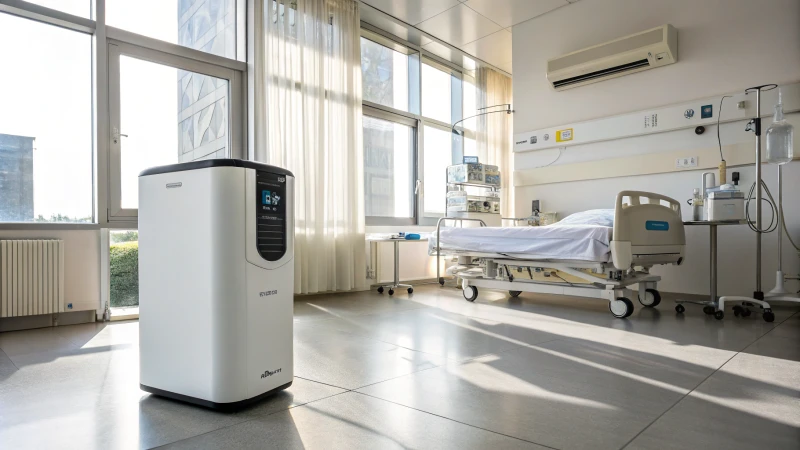
理解する CADR 病院内
清潔で新鮮な空気を期待して病室に足を踏み入れたとしよう。目に見えない小さな粒子がたくさん浮遊し、傷つきやすい人が吸い込もうとしている。その クリーンエア供給率CADR)4 は、空気清浄機がどの程度空気を清浄するかを測定するのに役立つ。病院のような重要な場所では、空気清浄機の性能が高いものを選ぶことが重要である。 CADR が不可欠になります。300CFMを超える数値は、多忙なER病棟のような広いスペースをカバーするのに理想的だ。
| 汚染物質 | おすすめ CADR |
|---|---|
| ダスト | 300+ CFM |
| 花粉 | 350+ CFM |
| スモーク | 400+ CFM |
医療グレードのろ過
しかし、それだけで終わらせてはいけない。 CADR.のような医療用フィルターの検査 ヘパ 14の問題これらのフィルターは、病院の空気に含まれる不要なゲストであるバクテリアやウイルスを捕捉します。有害な粒子が肺に入る前に、ほぼすべて捕捉します。病院の狭い空間で 空気清浄機5 壁掛けでも天井埋め込みでも、すべてが変わる。
規制に関する考察
ルールを理解することは、新しい言語を学ぶような感覚になる。米国では、医療環境に適しているかどうかを確認するために、FDAの認可が必要な場合がある。Active PureやHealthwayのようなブランドは、病院向けのこうしたニーズに対応している。一方、中国では、機器は現地の基準を満たすために空気消毒機としての資格が必要である。
騒音対策の重要性
騒音について考えてみよう。特に、静かなことが癒しの一部である場合、うるさい隣人を好む人はいない。大音量の機械が近くにある中で眠ろうとすることを想像してみてください!Decibel Cancellation™(デシベル・キャンセレーション)のような技術は、操作音を大幅に低減するのに役立ちます。
選択肢に迷っている人は、次のような会社の専門家に相談するとよい。 ヒソエア6 おそらく専門的なアドバイスを提供します。パフォーマンスと患者の快適さのバランスをとるには、数字だけでなく、安心感も必要です。
300CFM以上のCADRは、病院用空気清浄機に理想的である。真
300CFM以上のCADRは、広い病院空間を効果的にカバーする。
米国のすべての病院用空気清浄機には、FDAの認可が義務付けられている。偽
すべての病院用空気清浄機がFDAの許可を必要とするわけではなく、必要なものもある。
病院用空気清浄機に求められる認証とは?
病院用空気清浄機が最高レベルの認証を取得したときの快適さを思い浮かべてください。空気をきれいにするだけでなく、命を守るためにも本当に重要なことなのです。
病院にとって重要な認証を受けている空気清浄機を選ぶ。 ヘパ 14種類のフィルターが、極めて重要な医療グレードのろ過を提供。FDA(米国食品医薬品局)の認可は、健康の安全性を確認するものです。必要な機器 CADR 300CFM以上の定格。これは最適なパフォーマンスを約束する。
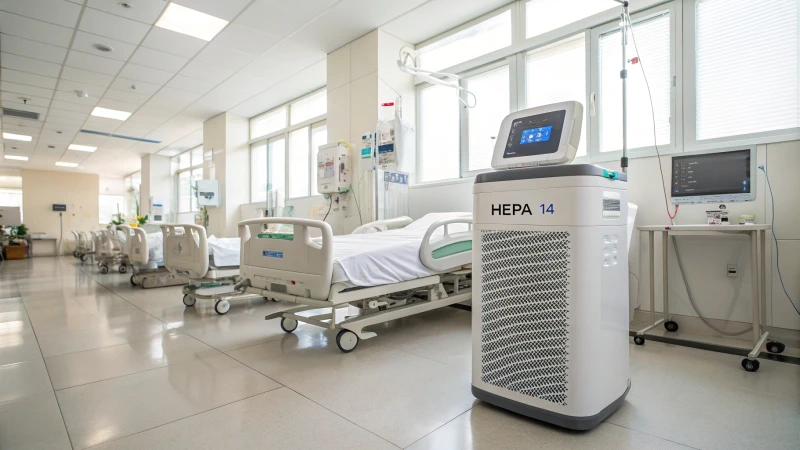
主要認定資格を理解する
空気清浄機について理解することは、特に健康が危険にさらされているときには、混乱を感じるかもしれない。私も初めてこのテーマを探求したとき、同じように感じた。すべてが複雑な単語と多くの短い形式で溢れているように思えた。ひとつ明確だったのは、認証の重要性だ。
必要不可欠なもの 認証7 は ヘパ 14フィルターにより、医療グレードのろ過を実現。このタイプのフィルターは、バクテリアやウイルスを含む浮遊粒子を99.995%まで除去することができます。このような効率は、医療環境では非常に重要です。
もう一つの重要な認証は、FDA認可である。米国では、FDA認可は空気清浄機が厳しい健康・安全基準を満たしていることを意味し、医療環境では特に重要です。
| 認証 | 説明 |
|---|---|
| ヘパ 14 | 99.995%の浮遊粒子を除去できる医療グレードのフィルター。 |
| FDAクリアランス | 米国の安全衛生基準に準拠していることを示す。 |
パフォーマンス指標と基準
病院や診療所の空気清浄機を選ぶ際には、性能が非常に重要である。
クリーンエア供給率(CADR8)も考慮すべき重要な指標である。これは、空気清浄機が特定のエリア内の空気をどれだけ素早く浄化できるかを測定するものだ。
病院では、次のような清浄機を選ぶことが望ましい。 CADR 300CFM以上で広いスペースを効率的にカバーします。
| パフォーマンス指標 | 重要性 |
|---|---|
| CADR > 300CFM以上 | 広いエリアでの効率的な空気清浄を実現。 |
設置と騒音レベル
清潔であることは重要だが、病院環境における平穏な環境もまた重要である。
病院では、設置オプションも重要である。壁掛け型または天井埋め込み型の清浄機は、省スペースで空気循環が良いため、より適している。
HisoAirのようなブランドは、病院での使用に理想的なこのような構成を提供している。
病院では患者にもスタッフにも静かな環境が求められるため、騒音レベルは決して無視できません。Decibel Cancellation™(デシベル・キャンセリング)のような高度なノイズキャンセリング技術を搭載した空気清浄機を選ぶことで、医療現場の静けさを保つことができます。
に関するより多くの洞察については 騒音制御技術9HisoAirのようなユニークな機能を持つ製品を探せば、さらに役立つかもしれない。
HEPA 14フィルターは99.995%の粒子を除去します。真
HEPA 14フィルターは、空気中の粒子を99.995%捕獲するように設計されています。
病院用清浄機にはFDAの認可は不要である。偽
FDA(米国食品医薬品局)の認可により、空気清浄機は病院における健康と安全の基準を満たしています。
設置タイプの違いは、病院の空気清浄機の性能にどのような影響を与えますか?
病院用空気清浄機の設置方法の違いが、その性能にどのような影響を与えるのか、不思議に思ったことはありませんか?
病院用空気清浄機の種類によって、空気の流れはさまざまだ。壁掛け型、天井埋め込み型、持ち運び型はすべて、空気の動きに影響を与える。カバーする空間の広さも変わる。騒音レベルも変化する。それぞれの清浄機には、特別な利点と欠点があります。これらの利点と欠点は、各病院のユニークなニーズにマッチしている。また、建物のインフラにも適合します。
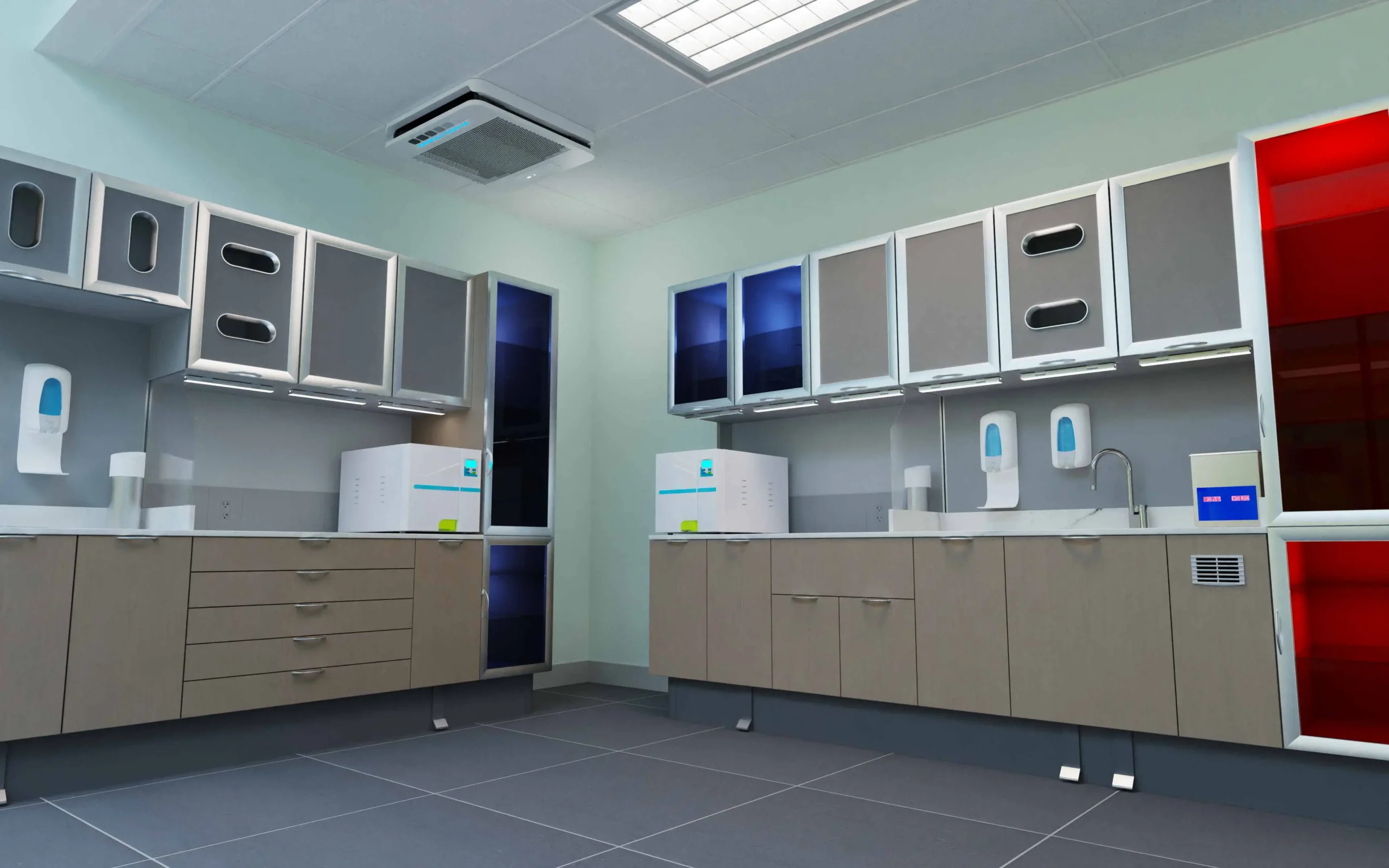
壁掛け型空気清浄機
壁掛け型空気清浄機は、一寸先が気になる病院にはぴったりの選択です。混雑した病棟を歩くことを想像してみてください。この清浄機は床面積を節約しながら、きれいな空気を自由に流すことができる。私は以前、この清浄機を使用している病院を訪れたことがあるが、空間がかなり広く感じられた。このユニットには特殊なフィルターがついていて、小さな細菌もキャッチしてくれるので、病院がより安全になります。
| メリット | 考察 |
|---|---|
| 省スペース設計 | 設置には頑丈な壁が必要 |
| 空気の流れを妨げない | 専門家による設置が必要な場合がある |
| 確実な配置 | 限られた機動性 |
の詳細については 壁掛け型空気清浄機10設置条件について指導してくれる専門家に相談することを検討してください。
天井埋込型空気清浄機
天井に設置する清浄機は、大きな病室の静かなヒーローだ。劇場の照明の使い方を思い起こさせる。邪魔にならないように、広い範囲をカバーするように賢く設置するのだ。これらの清浄機は空気を均一に拡散するため、病室や混雑した待合室では特に重宝される。多くは騒音を抑えるように設計されており、誰にも迷惑をかけないように静かに作動する。これは、病院では非常に重要な平穏を保つのに本当に役立ちます。
- 広範囲をカバーする: 天井用ユニットは通常、より広い面積をカバーし、室内に一定の気流を供給する。
- 静かな動作: 多くのモデルが静音技術を採用しており、落ち着いた病院環境で重要な役割を果たす。
と考えているなら 天井埋込型空気清浄機11既存のセットアップに適合するかどうかを知っている専門家に相談すること。
ポータブル空気清浄機
ポータブル空気清浄機は非常に便利だ。病院のさまざまなセクションで空気の質を迅速に改善する必要がある場合を想像してほしい。これらは簡単に移動でき、最も必要な場所で浄化を行うことができます。救急室から隔離エリアまで、変化する病院のニーズに対応できます。一時的な状況や予測不可能な患者数でその価値を発揮します。
- 動きやすい: すぐに空気清浄が必要な場所に素早く移動した。
- フレキシブルに使える: さまざまな部屋のサイズや用途に適しています。
一時的な状況や患者数の変化に直面した場合、次のことを考える。 ポータブル清浄機の利点12.
設置場所の違いが性能にどのような影響を与えるかを知ることで、病院の空気の質を改善することができます。各スペースに特有のニーズを調査することで、管理者は最も効率的な清浄機タイプを選択し、患者の安全性と快適性を高めることができます。
壁掛け式の清浄機は、病院の床面積を節約できる。真
垂直面を利用し、重要な床面積を解放する。
天井に設置された清浄機は、病院の活動を妨げる。偽
頭上のスペースを利用し、下の動きを妨げない。
結論
病院では、以下の機能を備えた空気清浄機が必要とされる。 ヘパ 14フィルター、高 CADR また、FDA(米国食品医薬品局)の認可を受け、最適な空気品質を実現し、治療環境における患者の安全性と快適性を保証します。
-
HEPA 14フィルターが、医療現場で健康被害をもたらす微小粒子を捕捉するためにどのように設計されているかをご覧ください。 ↩
-
効果的な空気清浄が病院の感染対策に不可欠な理由をご覧ください。 ↩
-
デシベル・キャンセレーション(Decibel Cancellation™)技術により静かな動作が実現し、病院環境での快適性が向上することをご理解ください。 ↩
-
高いCADRが病院環境における空気浄化効率にどのような影響を与えるかについては、このリンクをご覧ください。 ↩
-
HEPA 14フィルターが医療現場で有害な粒子を捕捉するために重要である理由をご覧ください。 ↩
-
病院での使用に合わせた最適な空気清浄機の選定を、ヒソエアのエキスパートがどのようにサポートするかをご覧ください。 ↩
-
HEPA14フィルターが病院レベルの空気浄化に不可欠であり、バクテリアやウイルスを捕獲して安全性を確保する理由をご覧ください。 ↩
-
CADRの格付けが空気清浄機の性能にどのような影響を与えるかをご覧ください。 ↩
-
デシベル・キャンセリング技術が空気清浄機のノイズを低減し、患者の快適性とスタッフの作業効率を向上させることをご覧ください。 ↩
-
壁掛け型清浄機が病院にとってスペース効率に優れ、安全である理由をご覧ください。 ↩
-
天井に設置することでカバレージを向上させ、ノイズを低減させる方法についてご紹介します。 ↩
-
ポータブル清浄機がいかに柔軟で、的を絞ったクリーニングを提供するかをご覧ください。 ↩


